- News
- Reviews
- Bikes
- Accessories
- Accessories - misc
- Computer mounts
- Bags
- Bar ends
- Bike bags & cases
- Bottle cages
- Bottles
- Cameras
- Car racks
- Child seats
- Computers
- Glasses
- GPS units
- Helmets
- Lights - front
- Lights - rear
- Lights - sets
- Locks
- Mirrors
- Mudguards
- Racks
- Pumps & CO2 inflators
- Puncture kits
- Reflectives
- Smart watches
- Stands and racks
- Trailers
- Clothing
- Components
- Bar tape & grips
- Bottom brackets
- Brake & gear cables
- Brake & STI levers
- Brake pads & spares
- Brakes
- Cassettes & freewheels
- Chains
- Chainsets & chainrings
- Derailleurs - front
- Derailleurs - rear
- Forks
- Gear levers & shifters
- Groupsets
- Handlebars & extensions
- Headsets
- Hubs
- Inner tubes
- Pedals
- Quick releases & skewers
- Saddles
- Seatposts
- Stems
- Wheels
- Tyres
- Health, fitness and nutrition
- Tools and workshop
- Miscellaneous
- Cross country mountain bikes
- Tubeless valves
- Buyers Guides
- Features
- Forum
- Recommends
- Podcast
review
£69.99
VERDICT:
Well-priced, premium output, practical, weatherproof and versatile headlamp, for nocturnal wild rides and more
Impressive light output
Three LED options
Good run-times
Ease of operation
Can be a bit fiddly to fit to a helmet, and may not fit all
Can get hot at high output when not moving
Weight:
162g
Contact:
At road.cc every product is thoroughly tested for as long as it takes to get a proper insight into how well it works. Our reviewers are experienced cyclists that we trust to be objective. While we strive to ensure that opinions expressed are backed up by facts, reviews are by their nature an informed opinion, not a definitive verdict. We don't intentionally try to break anything (except locks) but we do try to look for weak points in any design. The overall score is not just an average of the other scores: it reflects both a product's function and value – with value determined by how a product compares with items of similar spec, quality, and price.
What the road.cc scores meanGood scores are more common than bad, because fortunately good products are more common than bad.
- Exceptional
- Excellent
- Very Good
- Good
- Quite good
- Average
- Not so good
- Poor
- Bad
- Appalling
Magicshine's MOH 35 headlamp is compact, versatile and extremely powerful, with great practicality for off-road cycling, as well as camping, hiking and even household DIY tasks.
In the smart-looking black box Magicshine provides the headlamp itself, a rechargeable 4000mAh lithium-ion battery, USB-C cable, elastic headband, additional upper headband, battery mount, cable clip and user manual.
There is also an MOH 35B version of the headlamp, denoting programmable Bluetooth functionality, but on test here is the standard non-Bluetooth model.
The MOH 35 is aimed at outdoor pursuits in general, not specifically cycling, and there's no tailored advice for how to use it on the bike, either in the supplied instructions or in the company's online information. They do go through how to fix everything together, charging, lighting modes and run-times for general use, though.
Fitting
The soft elastic straps are adjustable via slotted plastic fittings, the main one going around the head's circumference, and the second strap fitting front to back over the crown of the head.
The headlamp is fixed to a flat bracket with three split slots, which allow it to slide onto the main strap, and there's a similar bracket for the battery, which slides on and clicks into place, released by a lever. The second strap has a loop at each end to fit onto the upper slot on each bracket, joining the two.
Putting it together in this way and adjusting it to your head size (not helmet) takes minutes. The cable is anchored at the light end and plugs securely into the battery pack, with a short coiled section helping to keep it taut. I used it when out walking and running in the dark, and the MOH 35 felt very secure in this configuration. There's plenty of adjustment to allow it to fit over a beanie or hard hat, though I can't say how easy it'll be for long-haired users to wear in conjunction with ponytails, plaits or any other hairstyle, or whether that will affect security.
On certain helmet shapes, namely those with a truncated rear and are a little more angular, the MOH 35 does fit externally, but the slippery nature of most helmet shells means it's hard to fit it securely. Despite some searching, I found no suggestions to indicate how the straps could otherwise be fitted to a cycling helmet, but after a little tinkering and thinking time, I realised that with the brackets and upper strap removed, the main strap can be undone, making a single length. This can then be fed through the helmet vents, ensuring sufficient strap is outside the helmet at the front and rear for the brackets to slot onto, before being refastened again.
The key is to orientate the strap so that the plastic connectors and adjusters are positioned externally, otherwise they press uncomfortably into your head.
The strap stretches directly across the helmet's interior from front to back, but is soft and stretchy enough that when you put the helmet on, it's not noticeable. I added the top strap to stabilise the battery and light more, although I don't think it's essential provided your main strap is well fitted, with no slack that could let them bounce while cycling.
I fitted the Magicshine to a very rounded, slippery Giro Cinder with MIPS. An internal MIPS cradle could make fitting a little more complicated on some helmets, and although the light fitted this one quite well, I can see that it would fit better onto some others because of their vent positions and shape, and wouldn't fit at all to several more. With my huge bonce, my helmet size is 59-63cm, which does literally stretch the MOH 35's capacity to its limit, but it still fitted satisfactorily.
Looking at the images showing how the light sits on this Giro helmet, ideally the battery and light would both be in line with the helmet's centre, but because of the Giro's size and the length of the cable, the battery was always pulled to one side. The light stayed central and stable, though, and I was never aware of the battery being a little offset.
Charging
Charging the 4000mAh li-ion battery takes around 2.5hrs from empty, via the supplied USB-C cable, from a laptop. Since the battery can be removed from the bracket quickly, you don't need to sit your grimy helmet on your desk to charge it, and the battery can also be used as a powerbank to charge other items. Clearly that'll limit your lighting run-time.
A tight-fitting rubber cover protects the charging port and test button from the elements, but the button can be pressed without opening the cover. One click illuminates an LED, indicating the remaining battery life in quarters: flashing red is 1-24%, red 25-49%, flashing green 50-74% and green is 75-100%.
LEDs and outputs
Despite its compact maximum size of just 25x33x22mm, the MOH 35's headlamp contains three separate LEDs. The largest, main LED is situated at the bottom and emits a cool white light; at the top left is a smaller LED with a diffusing lens, emitting warm white light; and at the top right is a red LED. They're controlled by a large rubber-covered switch on top of the headlamp, which is really easy to operate, even with gloves on, as it comprises most of the top surface.
A long press (1.5 seconds) switches the MOH 35 on or off, and a built-in memory will switch the light back on in the last mode and brightness setting you were using. Each subsequent single click of the button cycles through the group of lighting modes for each individual LED, and double-clicking the button will switch to the next LED, where you can again cycle through its group of modes, if necessary. If you change which LED you're using, the memory will revert to the default setting for each LED.
The MOH 35's output is impressive. The main LED offers 30, 100, 400 and 1,000-lumen settings; the warm white LED 5, 50 and 100 lumens; and the red LED 5 or 100 lumens constant, and 100 lumens flashing SOS mode. Default values for the smaller LEDs are 5 lumens, and the main LED defaults to 400 lumens.
Claimed run-times are also impressive, lasting from 2 hours 10 minutes to 10 days!
In use
I found operating the MOH 35 very intuitive, and separating the control of each LED works well, as you're usually only using one of them during a specific activity.
With the headlamp fitted in what seemed a suitable position, I began a series of on and off-road night rides. The headlamp's angle can be adjusted up and down through 60 degrees in six click-stop increments, and I found these perfect for illuminating as close as my handlebar and knees, the far distance, or everything in between.
Assuming you have a decent bar-mounted light as well, the MOH 35's effect won't be that noticeable ahead of you unless there's a reasonable offset between the output of each light source. If you're riding twisty trails, though, it illuminates your intended line far better than a fixed handlebar light can.
A word on light direction. The main and red LEDs are set in circular reflectors, with clear plastic covers, which means they project equal amounts of light in all forward directions, rather than light which is focused in a certain direction, as on a car. Off-road, this is useful for seeing all of your surroundings, especially overhanging branches and other obstacles. On the road, it can seriously dazzle other road users including fellow cyclists, and is likely to cause irritation at best and an accident at worst. The warm white LED does have a diffused lens, softening the light, but at 100 lumens, isn't powerful enough to see by when on the bike.
> Buyer’s Guide: The best 2021 front lights for cycling
Although you can just see enough to ride very carefully, the 100-lumen setting on the main LED isn't suitable for cycling; 400 lumens is enough for most uses, at average speeds, and gives a broad, even light pattern that is easy to ride with, even without an additional light.
If you really want virtual daylight, and reach that extends to well over 100m, the 1,000-lumen setting is outrageous: clear white light, no hotspots, illuminates everything you could ever wish to see, wherever your head is turned. There's certainly no chance of travelling too quickly for your field of view.
I was aware of slightly hazy vision when using the most powerful setting, possibly caused by flare, or the night-time climatic conditions, with perhaps more moisture in the air. It was much less noticeable at 400 lumens. The effect wasn't too intrusive, but did degrade my vision's sharpness a little.
I did feel very self-conscious when using the 400-lumen mode on the road, and when using the full 1,000 lumens away from it. The danger, if spotting another person, is of course looking towards them and seriously blinding them. While I really appreciated the incredible vision, I'm less keen on being perceived as antisocial.
Because the light modes cycle from lowest to highest output, if you're riding with the 1,000 lumens setting and suddenly want to reduce it, a single click takes you straight back to 30 lumens, which is pitch black by comparison. With the fastest clicking the MOH 35 allows, it still takes two or three seconds to recover to the 400-lumen setting, which, if you're moving and don't have an additional light, can get a bit sticky.
On this note, although I've said that the MOH 35 makes it possible to ride without another bar-mounted light, it can cause confusion, particularly on the road. I've occasionally struggled to quickly identify what was coming towards me when faced with a rider wearing a powerful headlamp. Maintaining a primary bike-mounted light makes you more recognisable.
> Beginner’s Guide: How to go bikepacking
The warm white LED seems best suited to other activities, such as for a bikepacker or camper doing tasks, cooking or reading around camp, where the diffused, less stark lighting at lower intensities makes more sense.
The red LED could be used as an extra rear light when cycling, but because fitting the MOH 35 to a helmet is fairly involved, you'd have to set it up this way only, and would then have a battery pack above your eyes. The constant red light is intended for non-cycling activities, to allow you to see without unduly ruining your night vision, and despite making you look a little suspicious to any random onlookers, it does this surprisingly well.
Heat and cooling
One potential pitfall of such a small headlamp with such high light output is heat. The headlamp does have cooling fins integrated into its lower rear edge, which help, but the best way of reducing heat build-up is air movement. When stationary, the headlamp could quite quickly reach over 50°C, if switched to peak output. Excessive heat causes the light to reduce its output, and after around two minutes in turbo mode, output drops by around 30-35%, and if no cooling is applied it will then drop further after another 10 or 11 minutes, to under 50% output, and finally to roughly 10% after some three hours. Overall, this means it far exceeds the claimed run-time in turbo mode, but without putting out 1,000 lumens for much of it.
With cooling applied, such as brisk cycling, the drop in output is much reduced, and the peak output duration extended. After several minutes at a lower output due to the light automatically stepping down, it's possible to cycle through the modes again, and regain turbo mode at the full 1,000 lumens for five minutes or more (depending on cooling), before repeating the cycle.
On the bike, I didn't visually notice any step down in performance when it happened, although the brightness difference between high and turbo modes did seem less defined. I didn't once feel I was lacking lighting, and so, in fact, because the stepdown process extends run-time markedly, it's not exactly a downside, as long as you're able to dose your turbo light usage a little.
In high (400 lumens) mode, there's less heat generated, allowing the MOH 35 to maintain the claimed output for around 4.5 hours before dropping down to about 25% of its power. Again, greater cooling effect can alter if and when this takes place.
Value
We haven't tested many head torches on road.cc, but Knog's Bilby Headlamp at £50 was well liked. It has a maximum output of 400 lumens, though, and a few fit and practical compromises.
Exposure's Link Daybright costs the same as the Magicshine but is just a 'be seen' light to maximise your visibility, rather than show you the way.
USE's Exposure Diablo Mk10 costs a hefty £215, and generates up to 1,500 lumens from its self-contained light body, but it's definitely off-road focused.
Conclusion
Overall, I found the general versatility of the MOH 35 to be excellent. Fitting it to a helmet was a bit of a fiddle, but once on, it stayed put. The quality and quantity of light it provides is easily sufficient for most riders, and it's hard to argue for more than 1000 lumens when most of the time 400 is plenty. The battery run-time is extraordinary, and as a second light for nocturnal or multi-day adventures it's very hard to beat, even for twice the price.
Verdict
Well-priced, premium output, practical, weatherproof and versatile headlamp, for nocturnal wild rides and more
road.cc test report
Make and model: Magicshine MOH 35 1000 Lumen Headlamp
Size tested: 1000 lumen max
Tell us what the light is for, and who it's aimed at. What do the manufacturers say about it? How does that compare to your own feelings about it?
Magicshine says, "All-purpose headlamp for general outdoor activities including hiking, camping, mountaineering, as well as running, skiing, cycling etc. sports."
Tell us some more about the technical aspects of the light?
Magicshine lists:
Main light - 1000 lumen max white spotlight 5500- 6000k temp
Warm light - 4300k colour temperature floodlight for reading, which is softer and less harsh
Red light - 3 modes, including SOS and Flash
21700 removable battery, 4000mAh capacity. USB-C in/out port
IPX6 water-resistant
60 degree lighting angle adjustment
Rate the light for quality of construction:
9/10
It's compact and solid, with a robust feel, and everything seems very well put together.
Rate the light for design and ease of use. How simple was the light to use?
9/10
When worn on the head, it's simple to put on and take off. Fitting it to a bike helmet is rather more involved, and it won't fit every helmet, so it's not quick to swap from lid to head. Usability is intuitively simple, and it's quite versatile.
Rate the light for the design and usability of the clamping system/s
7/10
The straps are simple to adjust for use on the head, but need to be completely unfastened in order to thread them into a helmet. The light bracket slots over the strap securely, and the light is fixed to it. The battery holder slots on to the strap in the same way, and a simple lever releases the battery for charging or other use. Everything seems solid and stayed put when on the bike.
Rate the light for waterproofing. How did it stand up to the elements?
9/10
So far I've had no problems with the MOH 35 during a very wet test period, and the seals and cable fit tightly.
Rate the light for battery life. How long did it last? How long did it take to recharge?
9/10
Run-times, for what is a very powerful light, are impressive, and from the discharge tests I did, seem to exceed the claimed times by a small margin. Depending on LED and mode selected, battery life should be anywhere from 2hrs 10mins to 240hrs, or 10 days! Charging from flat takes around 2.5hrs.
Rate the light for performance:
9/10
The light output when cycling is impressive, although best saved for off-road trips as it'll definitely upset drivers. The various lighting modes offer great practicality for bikepackers, adventurers, hikers and campers, or just doing awkward DIY tasks too.
Rate the light for durability:
8/10
Throughout testing, the MOH 35 coped perfectly with all I subjected it to. Potential weak spots over time could be the straps fraying, and the battery clip becoming loose, but with care, these shouldn't be problems.
Rate the light for weight:
8/10
At 162g, it's not heavy, and when worn on a helmet I can't say I was really aware of the added weight. Yes, the battery sticks up a bit, and may create some extra drag at high speed, but it you're riding in the dark, high speeds will be less likely. Worn on the head, the straps are comfy and spread the mass well.
Rate the light for value:
7/10
At just under £70, compared with others we've tested it's good value; you get a lot of lighting for your money, with useful versatility for the adventurous rider.
Tell us how the light performed overall when used for its designed purpose
Very well.
Tell us what you particularly liked about the light
Its usability, thanks to the different lighting modes, the light output, beam pattern, and ease of use once fitted.
Tell us what you particularly disliked about the light
Spending some time figuring out how to fit it to a bike helmet, as there are no instructions. More specific, helmet-friendly mounts would be preferable, even if that increased costs.
How does the price compare to that of similar products in the market, including ones recently tested on road.cc?
Head torches aren't often tested here, but Knog's Bilby Headlamp at £50 was well liked, but has a maximum output of 400 lumens, and a few fit and practical compromises. Exposure's Link Daybright costs the same as the Magicshine, but is just a 'be seen' light to maximise your visibility, rather than show you the way. USE's Exposure Diablo Mk10 costs a hefty £215, and generates up to 1,500 lumens from its self-contained light body, but it's definitely off-road focused.
Did you enjoy using the light? Yes
Would you consider buying the light? Yes
Would you recommend the light to a friend? Yes
Use this box to explain your overall score
Magicshine's MOH 35 is more geared for non-cycling use, with its strap arrangement, but with a little patience and application it can be made to fit securely on many cycling helmets. In both applications it stayed put, didn't feel unwieldy, and was simple to operate. The light modes, battery life and output are useful and impressive, and it's built to survive some abuse on the trails, or secreted in your luggage. Just don't plan to swap from your head to your helmet in a hurry.
About the tester
Age: 49
I usually ride: Specialized S-Works Tarmac SL6 with Campagnolo Super Record 12s My best bike is: BMC SLR01
I've been riding for: Over 20 years I ride: Most days I would class myself as: Expert
I regularly do the following types of riding: road racing, time trialling, cyclo cross, commuting, touring, club rides, general fitness riding, mtb, Riding with my children, using both a child seat and trailer bike


























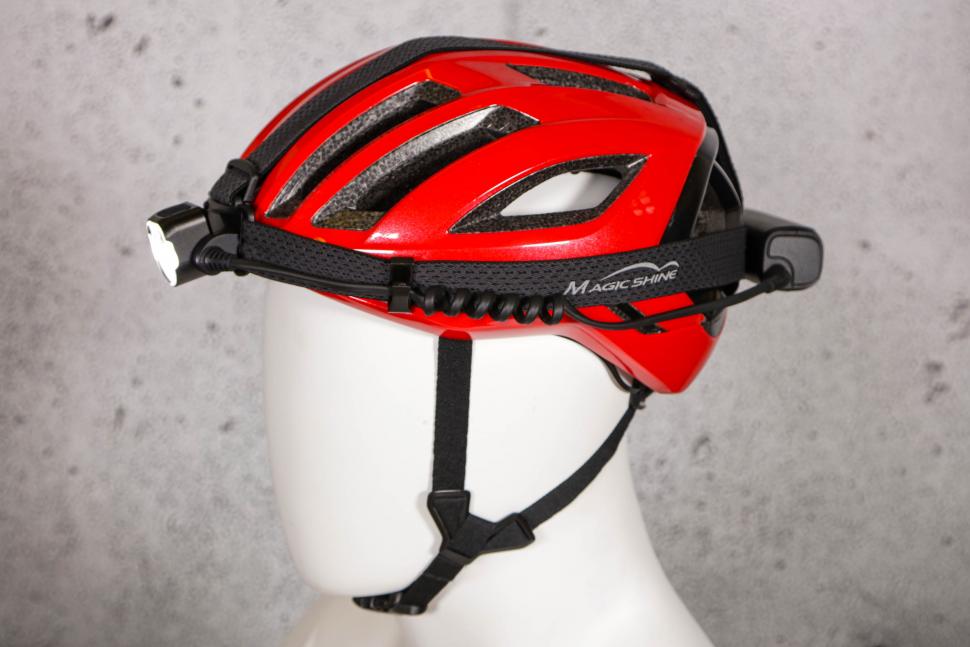
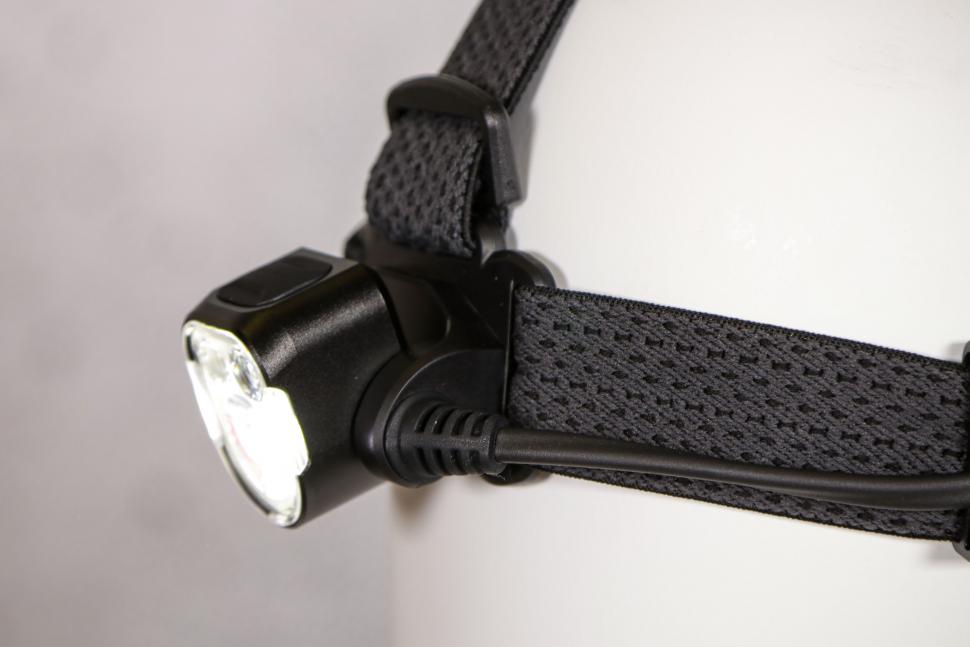

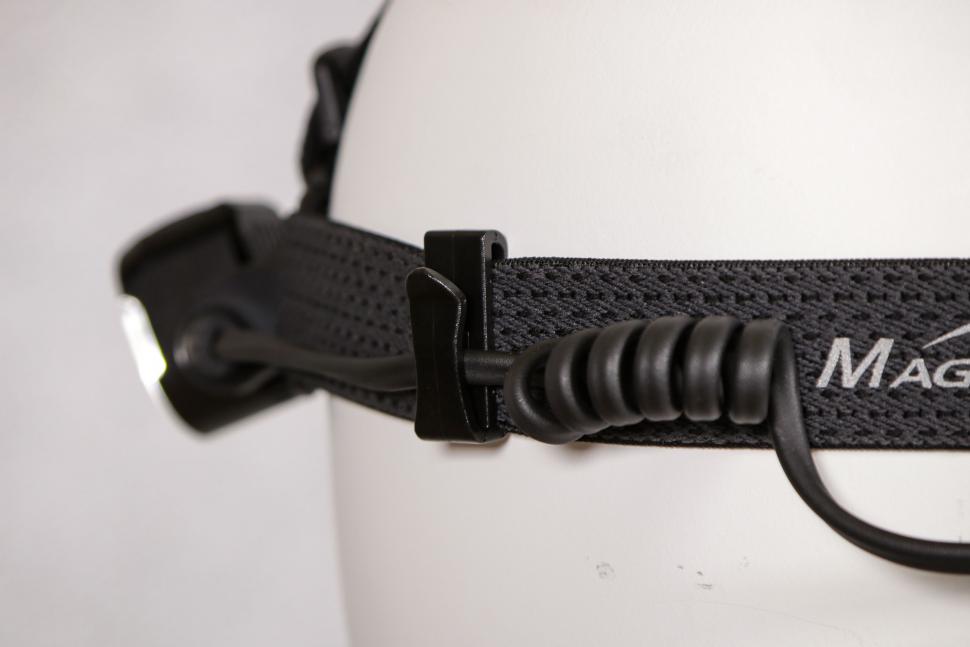
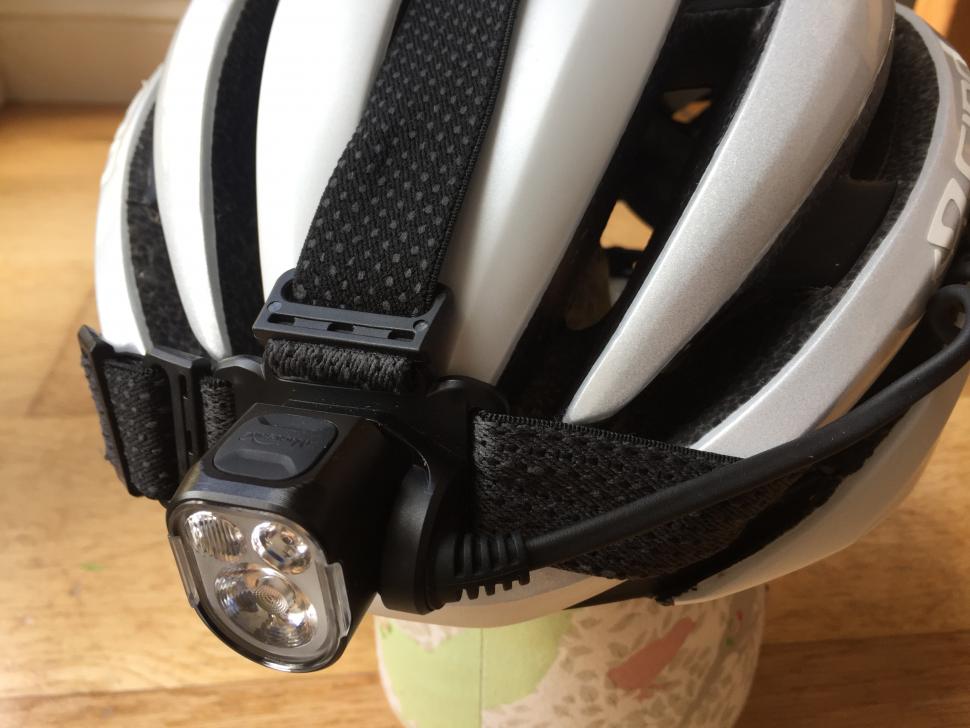

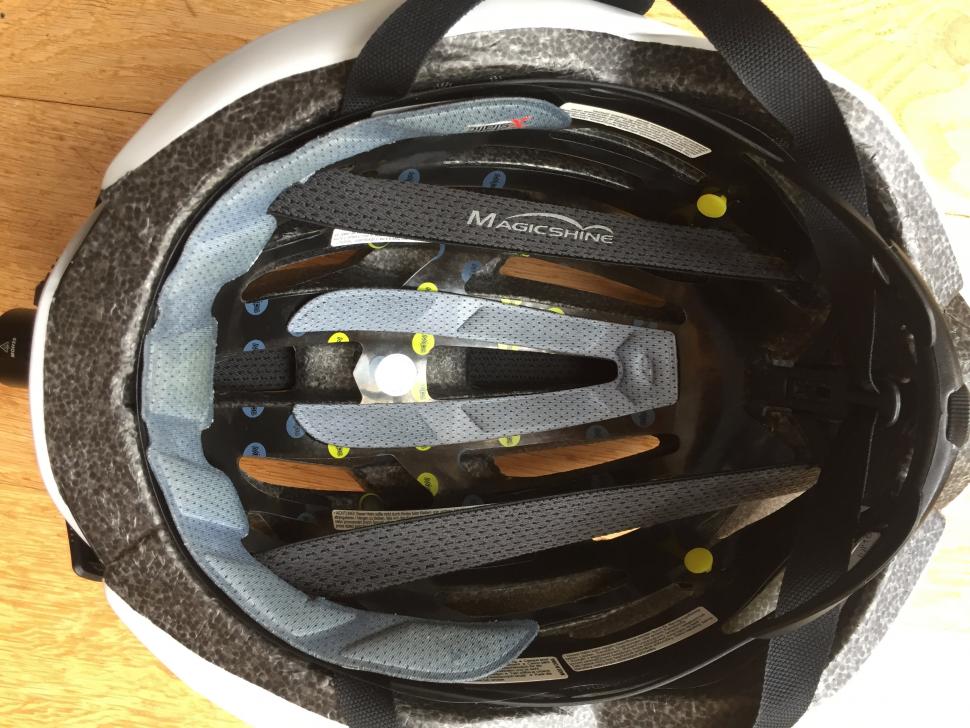

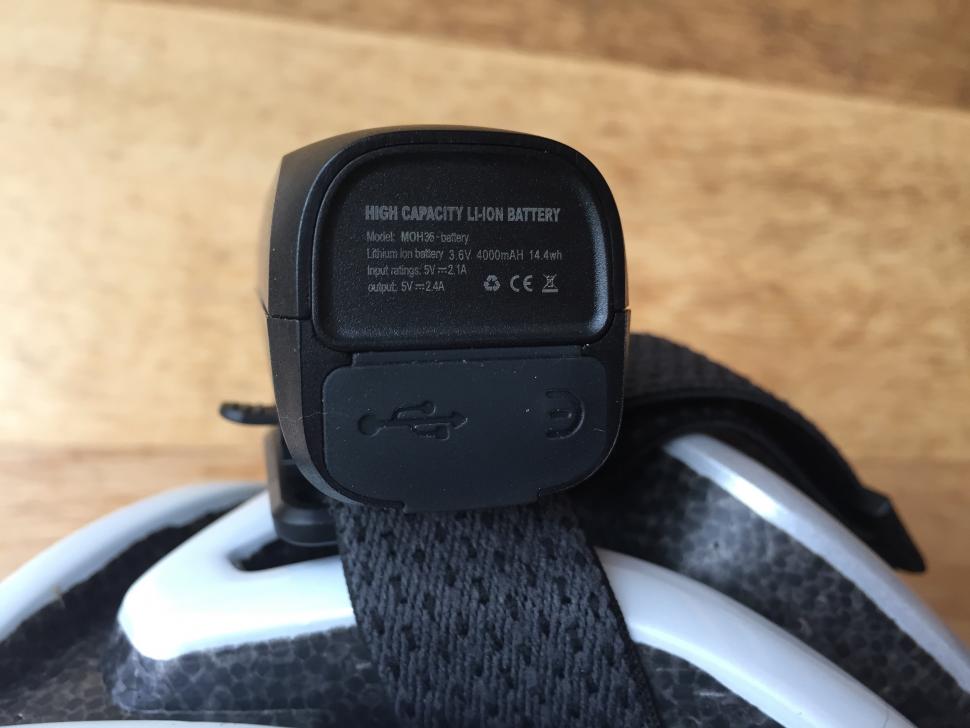
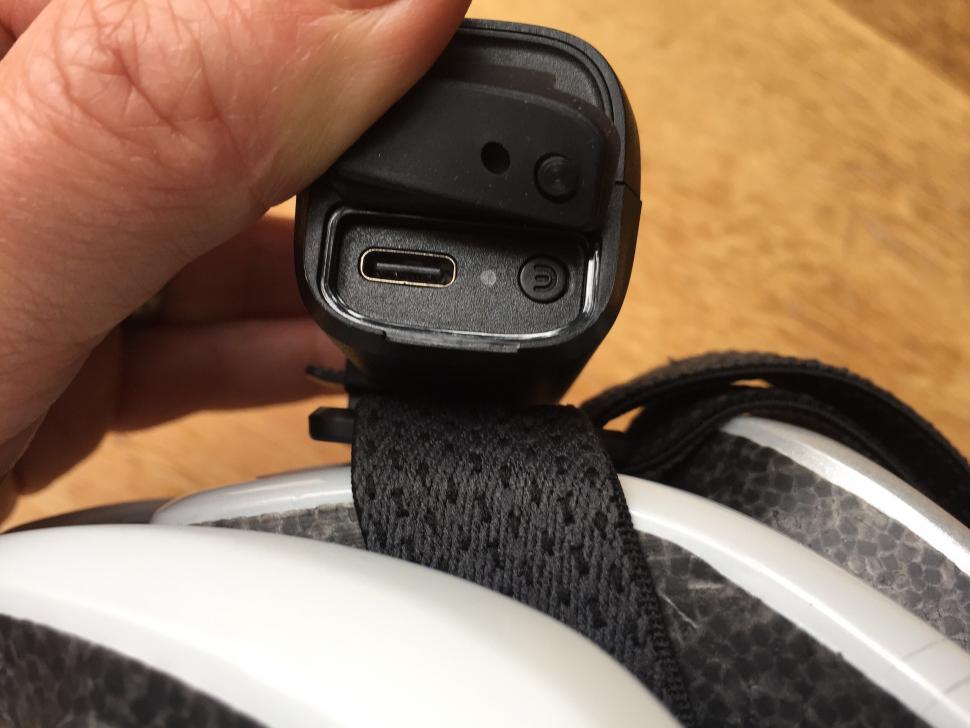
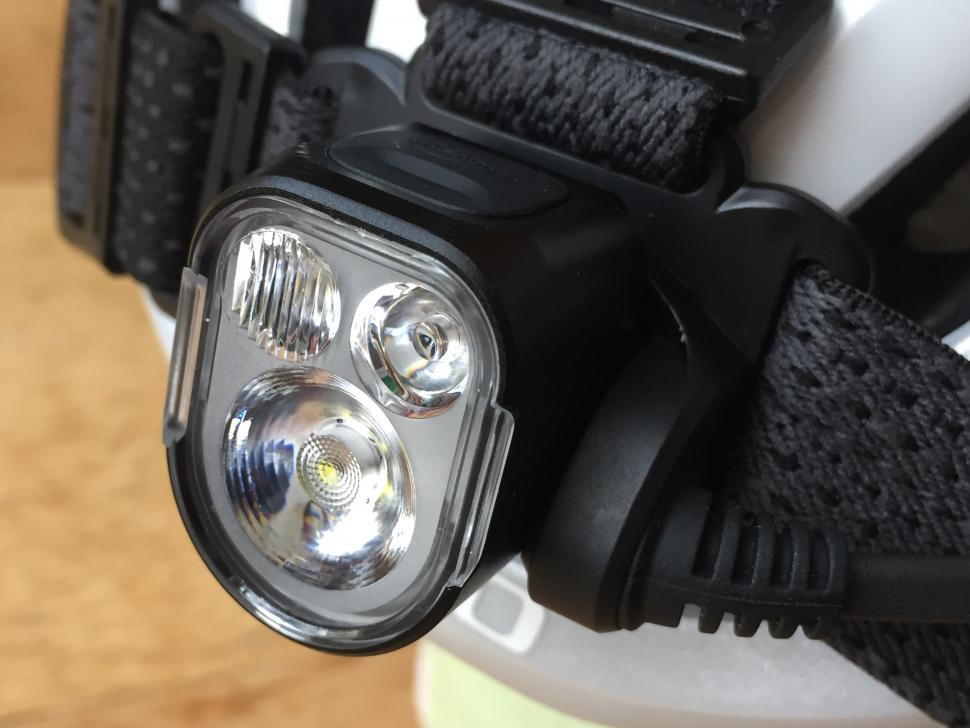
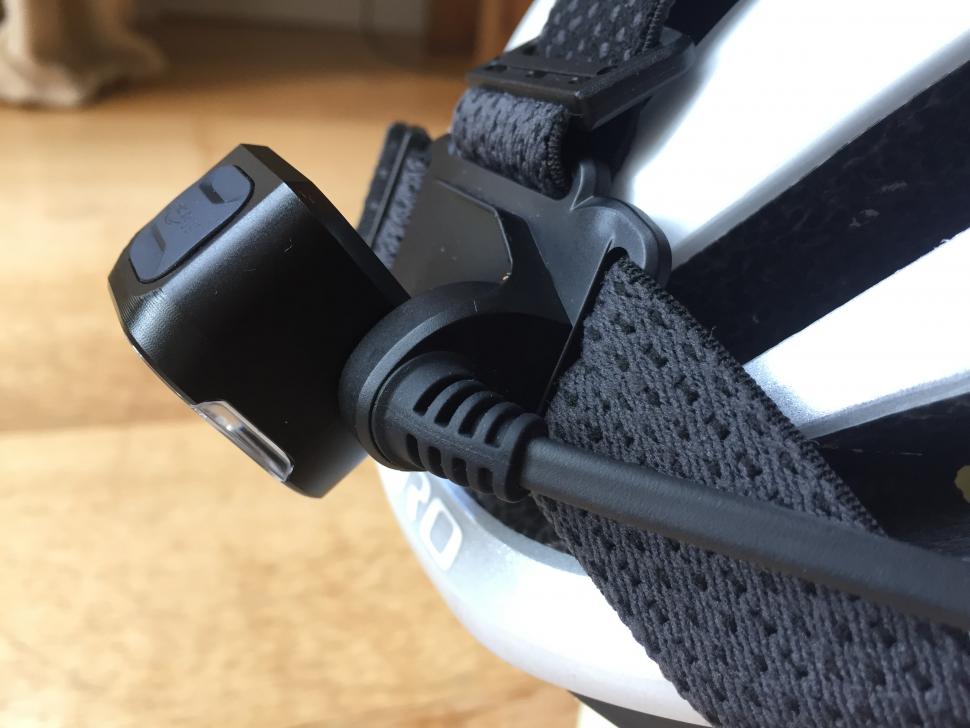
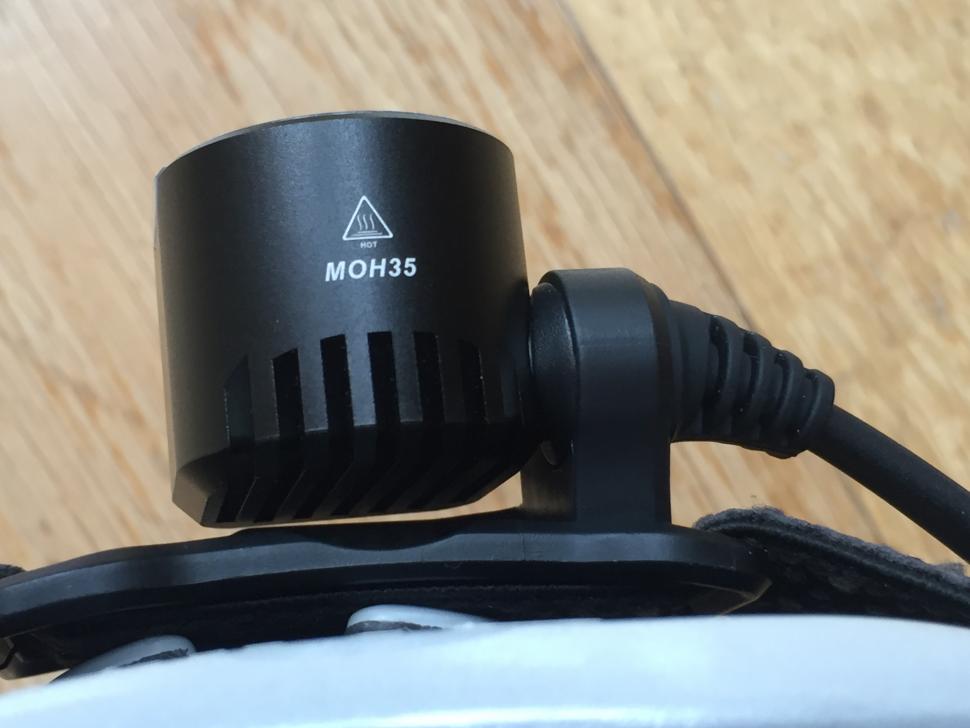

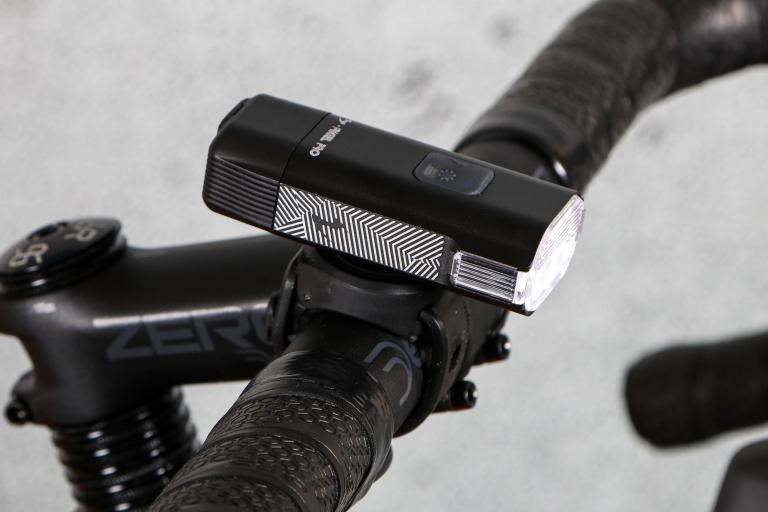
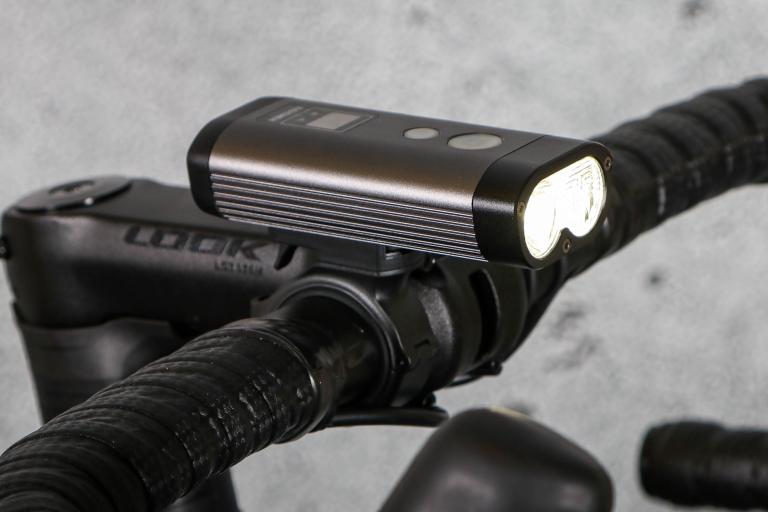

Unfortunately you can't really have just one bike for everything in London (or many places in the UK) because of theft. ...
Weird choice of photo. Why a crash ?
Did Sellafield blow?
I think that is why blind eyes have been turned in the UK, internationally aswell, with things like the Redhook crits, there were many licensed...
You're going to be writing that a lot in the coming months and years, unfortunately for you.
Ahem - other esporters(?) might be rather surprised to hear that the UCI has taken over their events - I think that would be the Cycling Esports...
I wonder how he got to the game?
You'd need some good wet weather gear for that ride too.
It seems to me that the most likely explanation is that whoever provided that quote fails to grasp the difference between a "public right of way"...
That article is far too kind to Moses. I highly recommend reading The Death and Life of Great American Cities. Despite the title, it applies to...